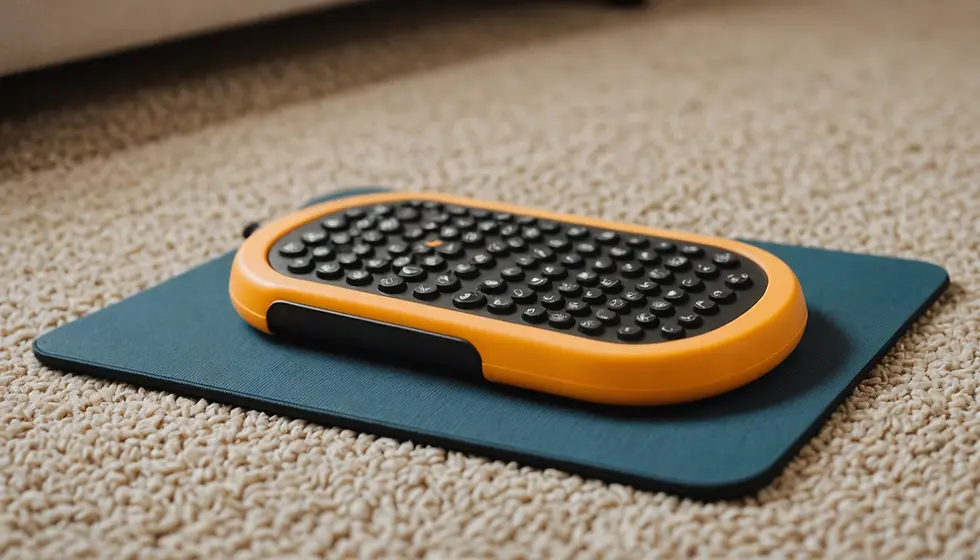Mastering the Art of House Training: A Comprehensive Guide for New Puppy Owners
- stevenscanine
- Mar 3
- 4 min read
Bringing a new puppy home sparks joy and excitement, but it also comes with important responsibilities, chief among them being house training. House training your puppy goes beyond cleanliness; it creates a safe and healthy environment for both you and your furry friend. This guide offers practical techniques for successful potty training and essential puppy care tips. You’ll be well on your way to enjoying a harmonious life with your adorable companion.
Understanding Puppy Training Behavior
Understanding your puppy's natural behaviors is key to successful house training. Puppies have small bladders and limited control. On average, a puppy can hold its bladder for about one hour for every month of age. For example, a three-month-old puppy can typically hold it for three hours. While accidents are common in the early stages, knowing their behaviors can help reduce them significantly.
Puppies often need to go after eating, drinking, playing, or sleeping. Watch for signs like sniffing or circling. For instance, if your puppy starts sniffing the floor, it might be time for a potty break. Familiarizing yourself with these signals will help you catch them in time.
Setting a Routine
A consistent routine is vital for effective training. Here’s how to establish an effective schedule:
Feeding Schedule: Feed your puppy at the same time each day—ideally twice every day. This promotes regular bowel movements and decreases accidents.
Frequent Potty Breaks: Initially, you should take your puppy outside every hour. This encourages them to learn that outdoors is the right place to go.
Designated Potty Area: Use the same spot outside for potty breaks. The familiar scent will encourage them to relieve themselves there consistently.
Crate Training: A crate can be a helpful house training tool. Dogs instinctively avoid soiling their sleeping area, so a crate can help your puppy learn to hold it until they can go outside.
Positive Reinforcement
Positive reinforcement is key in guiding your puppy towards the right potty habits. Avoid scolding if accidents occur. Instead, use appreciation and rewards. Here’s how you can reinforce positive behavior:
Verbal Praise: Use a happy tone when your puppy goes outside. Your enthusiasm will encourage them.
Treats: Give a small treat immediately after they potty outside. This creates a connection between the act and the reward.
Consistent Commands: Choose a specific phrase, like "Go potty," and use it every time you take them out. This builds reinforcement through repetition.
Dealing with Accidents
Accidents are part of training, and how you respond is important:
Do Not Punish: Never yell at your puppy for accidents. It can create fear, making training harder.
Clean Up Properly: Use an enzymatic cleaner to eliminate odors, reducing the chances of them returning to the same spot. Regular cleaning is crucial, especially in homes with puppies.
Identify Triggers: If accidents happen frequently, take note of when and where they occur. This could be indicative of a routine issue or even a medical concern.
Consider the Environment
A puppy-friendly environment supports house training. Here are key factors to consider:
Limit Spaces: Keep your puppy in a smaller area initially. A confined space lessens the likelihood of accidents until they learn where to go.
Watch for Signs: Stay vigilant while they roam. If they start to sniff or circle, take them outside immediately.
Accessibility: Ensure your puppy can easily access their potty area. If it’s raining or very cold, they may not want to go outside, leading to accidents indoors.
House Training Challenges
House training can present challenges. Being aware of these can aid in overcoming them:
Medical Issues: If your puppy frequently has accidents despite training, consult a veterinarian. Health issues could be at play, affecting their control.
Fear or Anxiety: Some puppies may hesitate to go outside due to loud noises or unfamiliar surroundings. Gradually introduce them to new environments to build confidence.
Old Habits: If your puppy comes from a shelter or previous home, they may have ingrained behaviors. Patience and consistency can help them learn new habits.
Expanding Freedom
Once your puppy shows consistency in potty habits, you can slowly give them more freedom:
Increase Space: Allow them access to more rooms gradually. This teaches them to maintain their training in different settings.
Supervision: Closely watch your puppy as they explore. If accidents happen, it may indicate they're not ready for more freedom yet.
Regular Breaks: Maintain the potty schedule even as you give them more independence, ensuring they don’t have accidents in their new areas.
The Importance of Patience
House training is a journey that requires patience. Each puppy is unique, learning at their own pace. Here are a few final reminders:
Stay Encouraging: Acknowledge small victories. When your puppy successfully goes outside, offer praise or a toy to celebrate.
Avoid Burnout: If frustration sets in, take a break. Training should be an enjoyable experience for both you and your puppy.
Wrapping Up the Training Journey
House training is a fundamental skill that enriches the bond between you and your puppy. By understanding their behavior, setting a routine, employing positive reinforcement, and being patient, you can develop an effective potty training strategy. With dedication, you'll maintain a clean home while providing your puppy with the security they crave.
With love and commitment, you'll master the art of house training, creating a joyful and fulfilling life with your beloved pet.









Comments